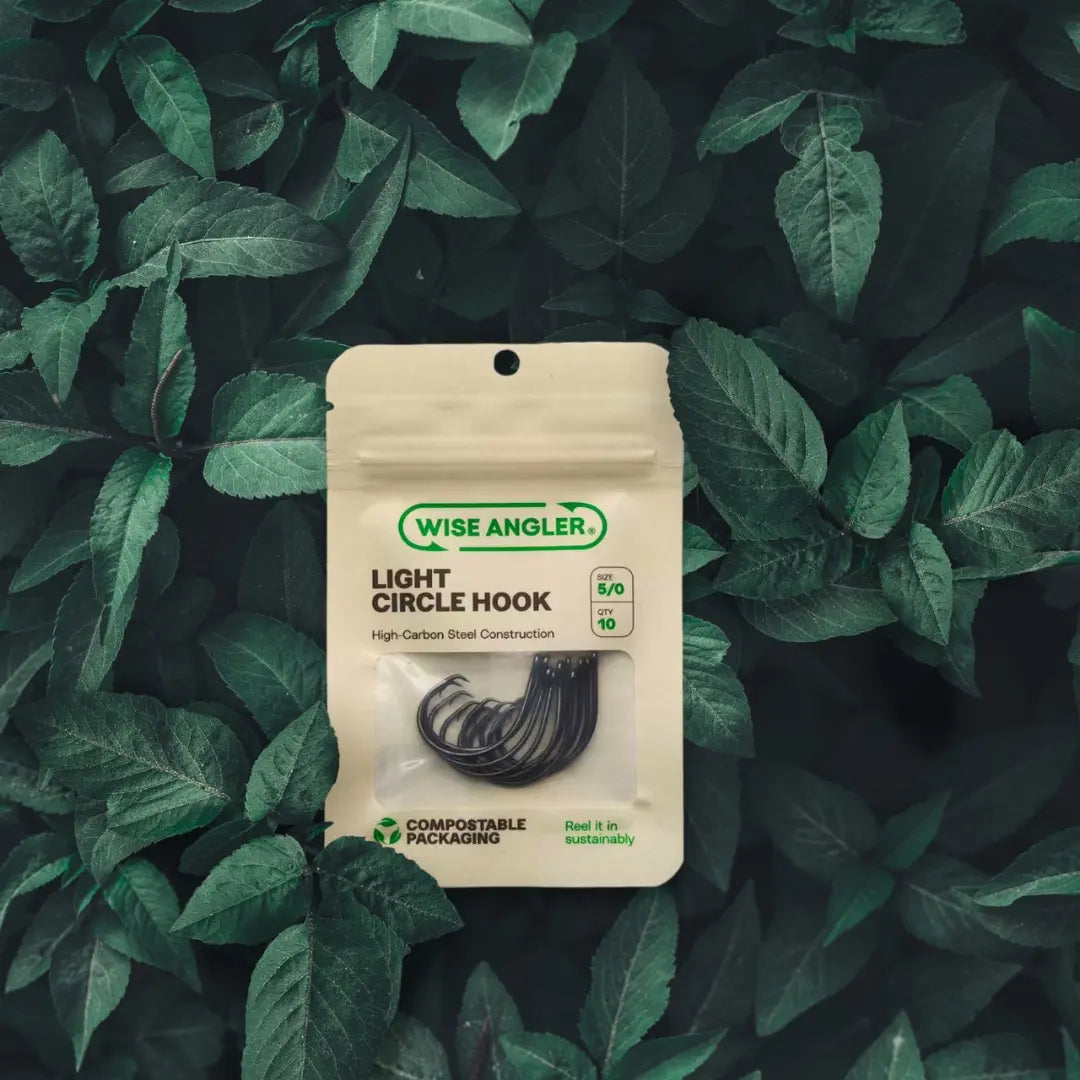Certified Compostable Fishing Packaging by Wise Angler
Wise Angler is leading a movement in recreational fishing with one clear mission: to eliminate plastic entirely through the use of certified compostable fishing packaging. While most tackle brands still rely on petroleum-based materials, our packaging is designed to break down naturally — verified by the world’s highest compostability standards. This shift to certified compostable fishing packaging protects the oceans we fish and aligns with the values of eco-conscious anglers.
What Makes Certified Compostable Fishing Packaging Different?
Not all “green” packaging is created equal. Biodegradable plastics often degrade into harmful microplastics. Certified compostable packaging, however, must meet strict testing criteria for safety and full breakdown in real-world conditions.
Wise Angler’s packaging meets three globally recognized certification systems:
AS 5810:2010 – Home Composting Standard (Australia/New Zealand)
-
Decomposes at ambient backyard compost conditions
-
Leaves no harmful residue or microplastics
-
Safe for earthworms and beneficial plant growth
NF T51-800:2015 – French/EU Home Compost Standard
-
Applies to food-contact bags and consumer packaging
-
Breaks down in non-industrial garden environments
-
Tests include soil impact, disintegration, and eco-safety
DIN CERTCO Certified – Reg. No. 9P0246
-
Certification covers our full product line
-
Allows us to display the OK Compost mark
-
Valid until 2029, with composition data reviewed by auditors
Wise Angler’s packaging variants — including transparent and silver printed bags — are fully covered under this certification, meeting maximum thickness and performance thresholds.
TÜV Rheinland Testing: Proof Beyond the Label
Wise Angler’s materials have undergone full biodegradation, toxicity, and performance testing through TÜV Rheinland, a globally respected testing institution. These tests confirm not just compliance — but real environmental safety.
Key verified results:
-
93.01% biodegradation in 109 days (ISO 14855-1)
-
100% earthworm survival in compost toxicity test
-
No inhibition of plant growth in germination trials
-
Heavy metals below detectable thresholds
-
pH balance, disintegration, and compost environment performance all passed
This is packaging that performs — not just on the shelf, but in your soil.
The Problem with Traditional Fishing Packaging
Despite growing awareness, the fishing industry continues to rely heavily on low-cost plastic packaging. Polybags, clamshells, and bubble mailers dominate the supply chain, contributing to:
-
Ocean-bound plastic waste
-
Microplastic buildup in fish and seafood
-
Polluted coastlines and waterways
-
Long-term ecological damage that undermines recreational fishing
Wise Angler’s shift to certified compostable fishing packaging eliminates these impacts and sets a new bar for tackle brands globally.
A Circular Approach to Fishing Products
Sustainability at Wise Angler goes far beyond packaging — but this is where it starts. Our entire product life cycle is guided by a plastic-free, circular mindset. Every hook, swivel, and soft bait we ship is designed to arrive in packaging that:
-
Decomposes fully in home or garden compost
-
Contains no petroleum-based plastic or additives
-
Returns to the soil, enriching rather than polluting
And we don’t stop at the consumer level. We deliver to our retail partners without shrink wrap, foam fillers, or plastic tape — ensuring our zero-waste promise extends from our warehouse to their shelves.
A Standard That Reflects What Fishing Should Be
We’re anglers, too. We know what it means to care about your catch — and the waters it came from. That’s why we’ve chosen the harder path: investing in certified materials, testing, and transparency.
Wise Angler is proud to be among the first in the world offering a fully certified compostable fishing packaging system that holds up to scrutiny, performs in the wild, and leaves no trace behind.
We don’t take shortcuts — and we don’t need to. Because the real measure of a fishing brand isn’t just what it lands in the boat, but what it leaves behind.

